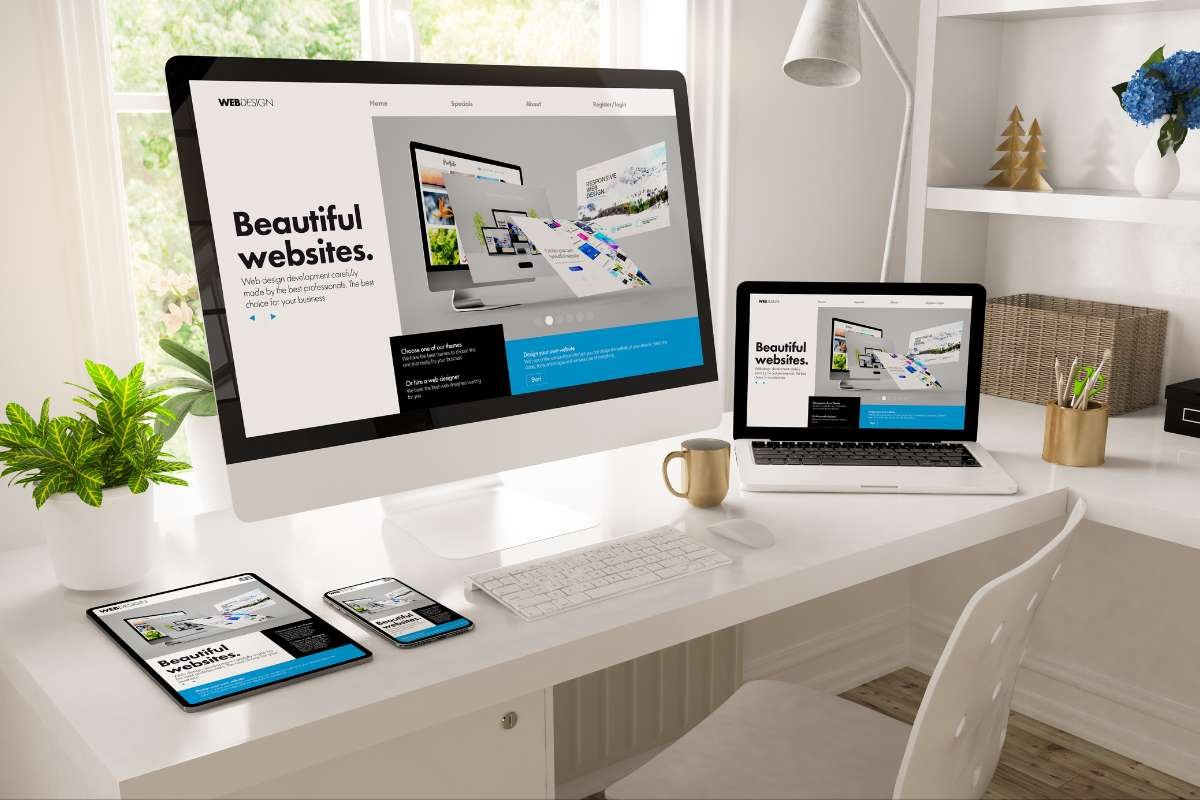User-centered design (UCD) is an essential factor for successful business app development in today’s digital landscape. As competition in the app market intensifies, businesses must focus on creating apps that truly meet the needs and expectations of their users.
UCD is an approach that prioritizes the user’s experience so that every aspect of the app—from functionality to aesthetics—is designed with the user in mind. This method boosts user satisfaction while also driving better business outcomes by increasing engagement and loyalty.
Incorporating UCD into the development process allows businesses to create apps that are intuitive, efficient, and enjoyable to use. It’s no longer enough to simply build an app that works; it must also provide a seamless and satisfying user experience. This focus on the user can differentiate an app in a crowded marketplace, which makes it more likely to succeed.
In this article, we will explore the key aspects of UCD in business app development and how it can enhance the overall user experience.
Key Aspects of User-Centered Design in Business App Development:
1. Harnessing Low-Code Platforms
The rise of low-code platforms is significantly impacting the way businesses approach app development, particularly in the context of user-centered design. Low-code platforms offer a way to build applications quickly and with less manual coding, which makes it easier to experiment and iterate based on user feedback. These platforms are becoming increasingly popular; by 2025, it’s expected that 70% of new applications will be developed using low code or no-code technology, a significant increase from less than 25% in 2020. This shift highlights the growing importance of speed and adaptability in app development.
For businesses focused on UCD, low-code platforms provide a powerful tool. They allow developers to create prototypes rapidly and adjust them as needed based on real user interactions and feedback. This iterative process is crucial for refining the user experience in a way that the final product aligns with user needs. With low-code technology, businesses can more easily involve users in the development process, testing features and making adjustments before full-scale development.
2. Mapping the User Journey

Understanding the user journey is a critical step in developing an app that truly meets the needs of its users. The user journey map is a visual representation of the user’s interactions with an app from the moment they first open it to their final action. This map helps developers identify pain points, moments of frustration, and opportunities for improvement.
When the user journey is carefully considered, the resulting app is more likely to meet user expectations. Every interaction point is designed to be as efficient and enjoyable as possible, so it reduces the likelihood of user frustration and abandonment. This approach also allows businesses to prioritize features that are most important to the user; this way, the app provides real value from the start.
3. Designing with Emotional Engagement
Emotional engagement is an incredible driver of user loyalty and satisfaction. Apps that connect with users on an emotional level are more likely to create lasting relationships and encourage ongoing use. Research shows that emotionally connected customers are 52% more valuable than those who are merely satisfied. This finding underscores the importance of designing apps that function well while also resonating with users on an emotional level.
So, to achieve this, businesses should focus on creating visually appealing designs, user-friendly interfaces, and interactive elements that delight and engage users. Small details, such as personalized greetings, encouraging messages, or aesthetically pleasing color schemes, can significantly enhance the emotional connection users feel with an app. When users feel emotionally invested in an app, they are more likely to return to it, recommend it to others, and engage more deeply with its features.
4. Creating Adaptive Interfaces

Adaptive interfaces play a significant role in ensuring that an app remains relevant and user-friendly over time. These interfaces adjust based on user behavior, preferences, and the device being used, providing a personalized experience that feels tailored to each user. For example, an app might change its layout or features based on whether a user is accessing it on a smartphone, tablet, or desktop. As such, it can guarantee that the experience is optimized for the specific device.
Designing adaptive interfaces requires a deep understanding of the user’s needs and how they might change over time. This way, organizations can enhance the user experience and also increase user engagement by making the app feel more intuitive and responsive. When users see that an app adapts to their preferences and usage patterns, they’ll continue using it and exploring its features.
5. Incorporating User Feedback Loops
One of the hallmarks of user-centered design is the continuous improvement of the app based on user feedback. Incorporating feedback loops into the development process allows businesses to make ongoing adjustments that enhance the user experience. This process involves collecting feedback from users regularly, analyzing it to identify trends or issues, and implementing changes that address these concerns.
Feedback loops are especially important after the app has been launched. Users often encounter issues or have suggestions that weren’t anticipated during the initial development phase. By establishing a system for gathering and acting on this feedback, businesses can quickly address problems and make improvements that enhance the overall user experience. This ongoing dialogue with users improves the app while also building trust and loyalty, as users see that their opinions are valued and that the app is continuously evolving to meet their needs.
6. Balancing Innovation with Usability

While innovation is a key driver in app development, it’s important to balance cutting-edge features with usability. An app that introduces new, innovative features but is difficult to use may fail to engage users. In user-centered design, the focus should be on creating a seamless experience that integrates innovative elements without compromising usability. This means carefully considering how new features are introduced so that they enhance the overall user experience rather than complicate it.
To achieve this balance, developers should prioritize usability testing throughout the development process. By involving users in testing and gathering feedback on new features, businesses can identify potential usability issues early and make necessary adjustments. The goal is to create an app that feels both modern and intuitive, where innovative features are seamlessly integrated into the user experience. When done correctly, this balance of innovation and usability can set an app apart in a crowded market. Eventually, this can attract and retain users who appreciate both the app’s functionality and its ease of use.
User-centered design is essential for creating business apps that truly resonate with users. By focusing on understanding user needs, creating adaptive interfaces, incorporating feedback, and balancing innovation with usability, businesses can develop apps that exceed user expectations. As the app market continues to grow, prioritizing user-centered design will be vital for businesses looking to stand out and thrive.


















